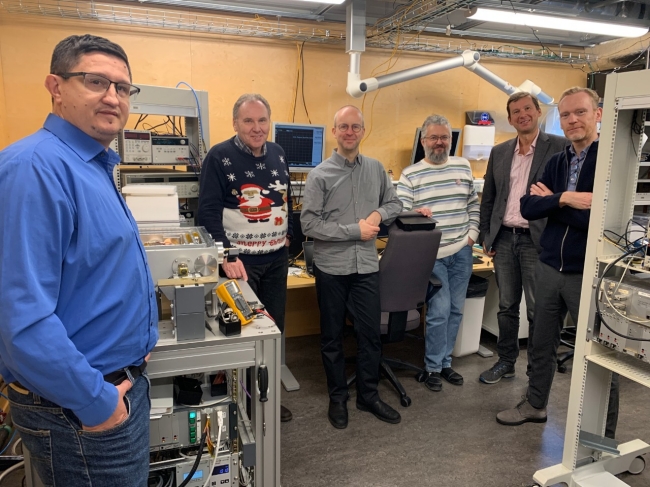A new development study, led by the Group of Advanced Receiver Development (GARD, Chalmers University, Sweden) started on 19 December 2023. The study aims to improve the sensitivity of ALMA receivers by developing a new low-loss construction technique for the waveguide components.
Development study on advanced waveguide component technologies kicks off

The kick-off meeting participants inside the GARD laboratory
This novel technique consists of microfabricating the waveguides, i.e. the lines through which the signals are transported within the receivers before the analog signals are digitized. These components will be carefully "grown" rather than milled out from a copper block. This should provide much improved surface accuracy and linear dimension accuracy, hereby reducing the signal loss during this transport.
The components to be fabricated are primarily the orthomode transducer (OMT, separating the incoming sky signal into two orthogonal polarization channels), the waveguide load used to terminate the excess LO signal, and the integrated mixer block. One of the most challenging innovations will be to construct the central turnstile part of the OMT on substrates, which should allow scalability in frequency and in particular make an OMT for ALMA Band 7 and 9 currently using polarization grids. For these bands, this should improve polarization alignment on sky and also make the components more reproducible in series production. The study will concentrate on ALMA Bands 7 and 9, even though this microfabrication technology can also be applied to other bands, contributing to the goal of the ALMA Wideband Sensitivity Upgrade to improve the overall sensitivity of the ALMA receivers.

